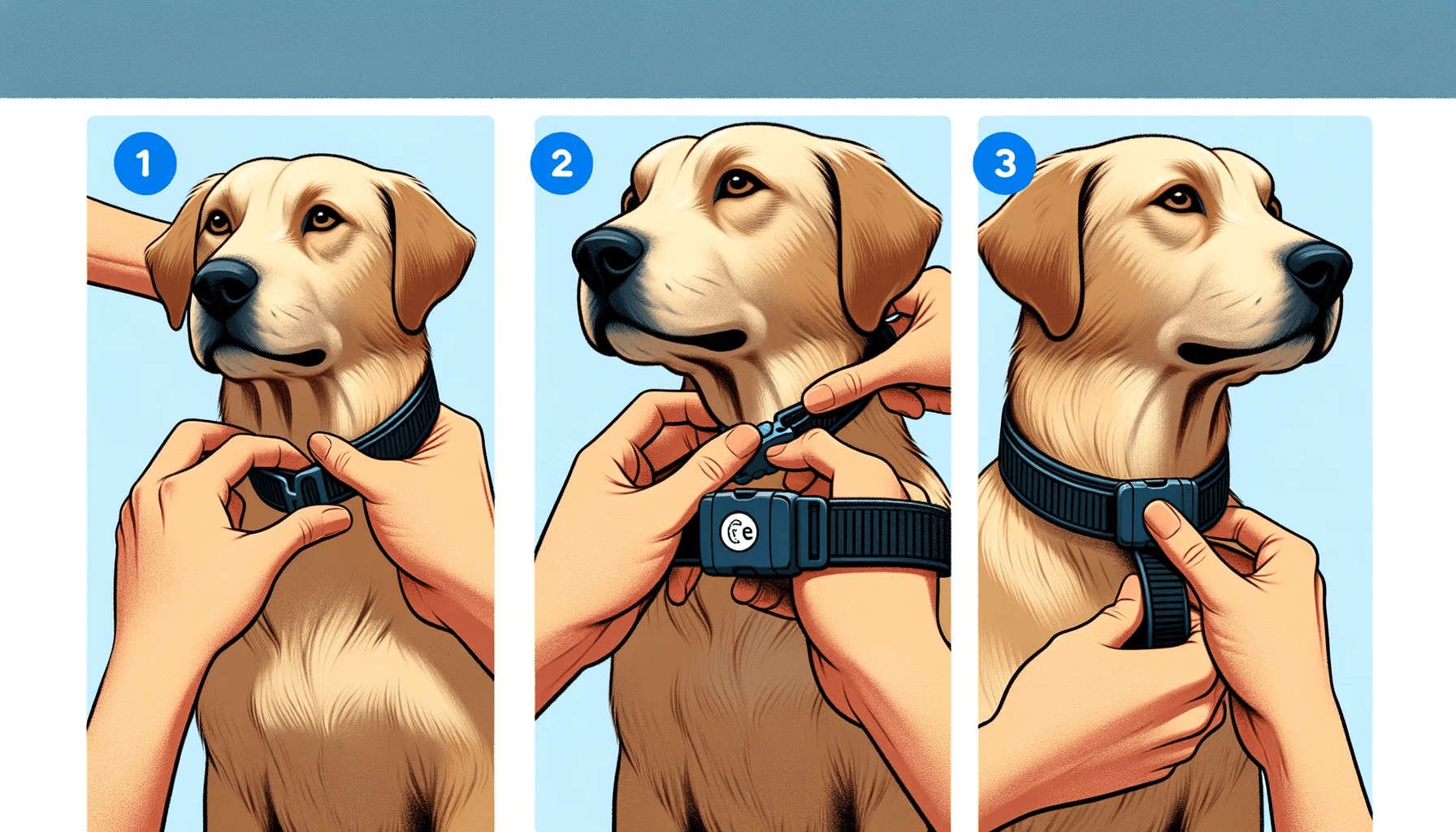Are you looking to start a dog walking business but unsure of how much to charge?
Imagine this scenario: you have just started offering your dog walking services in a bustling city neighborhood. You want to make sure you’re pricing your services competitively, but you’re not sure where to start.
Determining the right rate for dog walking can be a challenge, as it depends on several factors such as location, duration of the walk, and the number of dogs being walked.
In this guide, we will explore different considerations and factors to help you determine how much you should charge for dog walking services.
Let’s get started!
Key Takeaways
- Consider the average cost in your area and research market rates and customer feedback to determine competitive pricing for dog walking.
- Take into account factors such as the number of dogs and length of the walk, as well as any additional services offered during the walk.
- Location and demand in your area, as well as the services offered and your experience and qualifications, can affect dog walking rates.
- Adjust rates based on the local market and competition, and consider the added value of additional services, expertise, and qualifications when determining pricing.
Determining Competitive Pricing
To ensure fair compensation and stay competitive in your local market, you should determine your dog walking rates based on factors such as the number of dogs and the length of the walk, in addition to researching market rates and customer feedback.
When setting your rates for dog walking, it’s important to consider the average cost in your area. This can be easily determined by using websites like LocalPetCare.com, which provide information on the average rates charged by pet care professionals in your specific location. By comparing these rates, you can get an idea of what other professionals in your area are charging and ensure that your rates are competitive.
In addition to the number of dogs and the length of the walk, you should also take into account any additional services you may offer during the walk. Some dog walkers offer extra services such as feeding, grooming, or administering medication, which may warrant a higher charge per walk. It’s important to consider the level of work required for each walk and adjust your rates accordingly.
Customer feedback is also crucial when determining your dog walking rates. By listening to your clients and understanding their needs and expectations, you can ensure that you’re providing a high-quality service at a fair price. Pay attention to any comments or suggestions they may have regarding your rates, and use this feedback to make any necessary adjustments.
Factors Affecting Dog Walking Rates
When determining the rates for your dog walking services, there are several factors that you should consider.
Firstly, the location and demand in your area can greatly impact the fees you can charge, with higher rates typically seen in larger cities.
Secondly, the services you offer, such as specialized handling skills or insurance coverage, can justify higher prices.
Lastly, your experience and qualifications as a dog walker will also play a role in determining the rates you can command.
Location and Demand
You should consider the location and demand when determining how much to charge for dog walking.
The location where you offer your services can have a significant impact on the rates you can charge. In larger cities, where the demand for dog walkers is higher, you can generally charge higher fees. This is because there’s a larger pool of potential clients and more competition among dog walkers.
Additionally, if you have to travel long distances to walk dogs or if clients specifically request walks in certain locations, it may be justified to charge more for your services.
It’s essential to research the average rates of other dog walkers in your area to ensure that your prices are competitive, but also reasonable for the demand and location you’re operating in.
Services Offered
Consider the specific services you offer as a dog walker to determine the factors that can affect your rates. As a pet owner, you want to ensure that your furry friend receives the best possible care during their walks. This is why dog walkers charge varying rates based on the services they provide.
The services offered by dog walkers can include additional tasks such as feeding, grooming, and basic training. These extra services can justify higher rates, as they require additional time and expertise.
Additionally, if you offer specialized services for specific dog breeds, such as handling large or aggressive breeds, you can charge higher rates due to the specialized care required.
It’s important to consider the unique services you offer and the level of expertise you bring to the table when determining your dog walking rates.
Experience and Qualifications
To determine your dog walking rates, take into account your experience and qualifications as they play a significant role in the value you bring to your clients.
Experienced dog walkers can charge higher rates due to their expertise and track record. Clients appreciate the peace of mind that comes with knowing their furry companions are in capable hands.
Specializing in specific dog breeds can also justify higher prices, especially for handling large or high-energy breeds that require extra attention and care.
Additionally, offering insurance coverage adds an extra layer of protection and can warrant higher fees. Certifications, positive referrals, and special qualifications are also factors that can justify higher charges.
Remember to consider the average rates in your area, the number of dogs being walked, and any additional fees for extra dogs when determining your per walk charge.
Setting Rates Based on Experience
For experienced dog walkers, determining rates based on their level of expertise is essential. As a professional dog walker, you have acquired valuable skills and knowledge through your years of working with various breeds and temperaments. This experience sets you apart from novice walkers and allows you to command higher rates for your services.
When setting your dog walking rates, take into consideration the quality of service you provide. Clients are willing to pay more for the peace of mind that comes with hiring an experienced walker. Your ability to handle different situations, such as leash aggression or separation anxiety, is invaluable and should be reflected in your pricing.
Additionally, your reputation as an experienced walker plays a significant role in setting rates. Positive referrals and testimonials from satisfied clients can justify higher fees. It’s important to highlight your qualifications and certifications to showcase your expertise and reassure potential clients of your professionalism.
Additional Services and Add-Ons
When it comes to offering additional services and add-ons for your dog walking business, pricing for these extras is an important consideration. You should determine the cost based on the time and effort required for each service.
Some popular add-on options include grooming, pet sitting, and boarding. By providing these additional services, you can increase the value you offer to pet owners and cater to their specific needs.
Pricing for Extras
You can offer various additional services and add-ons to enhance the value of your dog walking business. These extras can help differentiate your services from other dog walkers and provide more convenience and value to your clients.
When deciding how much to charge for these additional services, it’s important to consider the cost of providing them, the demand for these services in your area, and the perceived value they bring to your clients.
For example, if you offer grooming services in addition to dog walking, you may charge a higher rate compared to just dog walking alone. Similarly, if you provide pet sitting or boarding services, you can offer package deals that include dog walking, grooming, and pet sitting, giving clients the option to choose the services they need.
Popular Add-On Options
Popular add-on options for your dog walking business include:
- Longer walks for clients who prefer their dogs to get more exercise. This can be offered as an add-on to your regular walking prices.
- Package deals that include services such as grooming, boarding, and pet sitting. These package deals can be attractive to people who go out of town or work long hours.
- Discounts for loyal customers. Loyalty rewards can result in lower costs per walk for clients compared to paying for each walk separately.
Value for Pet Owners
To enhance the value for pet owners, consider offering a variety of additional services and add-ons to cater to their specific needs and preferences.
As dog walkers, you have the opportunity to offer more than just a simple walking service. By providing extras such as grooming, boarding, and pet sitting, you can increase the overall value of your business.
Offering discounts and package deals for loyal customers can also help build a base of repeat clients. Loyalty rewards can result in lower costs per walk for clients compared to paying for each walk separately.
Including additional services in packages can cater to the specific needs of dog owners, making the services more attractive. By offering a range of services and add-ons, you can stand out from the competition and provide a comprehensive solution to pet owners.
Now, the question becomes, how much should you charge for these additional services and add-ons?
Considering Location and Transportation Costs
Location and transportation costs play a significant role in determining the fees for dog walking services. As a dog walker, you need to consider the distance you’ll travel to reach your clients and the specific locations they want their pets walked. Larger cities generally have higher rates due to the higher cost of living and increased demand for dog walking services. If you have to travel long distances or cater to specific park requests, it’s reasonable to charge more to cover your transportation costs.
Another factor to consider is the length of the walk. Some clients may require shorter walks, while others may want their dogs to be exercised for a longer period. You can adjust your fees accordingly, charging more for additional time spent with the dogs. Additionally, you may want to offer different pricing options based on the number of dogs being walked. Walking multiple dogs from different clients at the same time can result in lower prices per dog, as you can maximize your time and effort.
When determining how much you should charge for your dog walking service, it’s crucial to research the rates in your area. Rates can vary based on location, duration, and the number of dogs. By considering location and transportation costs, you can ensure that your fees are fair and cover your expenses while providing a valuable service to pet owners.
Holiday and Weekend Fees
If you’re a dog walker, it’s important to consider holiday and weekend fees, as they can affect the pricing for your services. During holidays, the demand for dog walking services tends to increase, which means that dog walkers may charge extra fees to accommodate the high demand. These holiday fees typically range from $5 to $10 per walk. Keep in mind that availability for dog walking services might be limited during holidays, so it’s advisable to book in advance to secure the services of your preferred dog walker.
When deciding how much to charge for dog walking services during holidays, it’s essential to take into account the usual prices in your area. Dog walking prices generally range from $10 to $35 per walk, but during holidays, dog walkers may increase their rates due to the high demand. In cities like New York City, where dog walking services are in high demand, rates during holidays can be even higher, ranging from $30 to $40 for a 30-minute walk.
In addition to holiday fees, some dog walkers also charge extra for weekend services. Since weekends are often considered leisure time, dog walkers may have limited availability or may choose to charge extra to compensate for working on weekends. The exact amount for weekend fees may vary, so it’s best to discuss this with your dog walker in advance.
Remember that some dog walkers may also offer discounts or additional services during holidays or weekends, so it’s worth inquiring about any special deals they may have. By considering holiday and weekend fees, you can ensure that you’re setting the right prices for your dog walking services and providing the best value to your clients.
Comparing Rates With Other Dog Walkers in Your Area
When comparing rates with other dog walkers in your area, start by researching the prices they charge for their services. A great resource to use is LocalPetCare.com, where you can find a list of pet care professionals in your area and compare their rates. The website even has a rate calculator that shows the state and national average rates, helping you determine competitive rates in your area.
As you compare rates, it’s important to consider several factors. Firstly, take into account the background and experience of the dog walkers. Experienced and well-trained professionals may charge higher rates, but they also offer a higher level of service and expertise. Additionally, consider the competition in your area. If there are many dog walkers offering similar services, you may need to adjust your rates to remain competitive.
Expenses and overhead costs should also be taken into consideration. Factors such as the length of the walk and the location can impact the rates. If you’re providing additional services like grooming or pet sitting, it’s important to factor those into your pricing as well.
When comparing rates, it’s helpful to look at the profiles of dog walkers on platforms like Rover. This will give you an idea of what other professionals are charging for comparable services. Use the average rate as a starting point, and then adjust based on your own experience, qualifications, and the unique services you offer.
Frequently Asked Questions
What Is the Best Price to Charge for Dog Walking?
When setting pricing for dog walking, consider factors like number of dogs, walk length, location, and any additional services or specific dog needs. Research market rates, establish good relationships with customers, and offer value-added services to set competitive rates.
How Much Should I Ask to Walk a Dog?
When determining your dog walking rates, consider factors like location, services offered, and competition. Calculate costs based on time, number of dogs, and walk frequency. Don’t be afraid to negotiate fees and offer loyalty rewards to increase rates without losing clients.
How Much Profit From Dog Walking?
To maximize your profit as a dog walker, consider factors like experience, referrals, and certifications. Research market rates and competitors to set competitive prices. Balance cost and value, understand market demand, and use effective pricing strategies to earn more.
How Much Does a Dog Walker Make in Texas?
When determining how much to charge for dog walking in Texas, consider factors such as the average income for dog walkers, competition, and location. To increase revenue, build a loyal client base and offer additional services. Negotiate fees with clients based on the value you provide.
Conclusion
In conclusion, when it comes to setting rates for dog walking, it’s important to research market rates in your area and consider factors such as competition and demand.
Offering additional services and add-ons, as well as considering location and transportation costs, can help justify higher rates.
Interestingly, did you know that the national average for dog walking rates is between $15 and $25 per walk?
By providing quality service and building a loyal client base, your dog walking business can thrive and be profitable.






